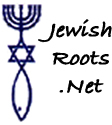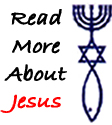






![]()

The 15th of Av is a joyous holiday that commemorated different things throughout time. Its name reflects the date which it is observed on, the fifteenth day of the month of Av. Another name for this holiday is "The Day of the Breaking of the Ax."
There is not a biblical source for this holiday. There is, however, reference to the wood gathering event in Neh. 10:34. There is also some reference to this holiday in the Talmud.
This holiday helps to commemorate the end of the wood chopping season. The wood was used to help create the fire on the bronze altar.
The dating of this holiday goes back pretty far, depending on the source referenced. For some, it ties into the days of Moses. For others, it begins around the Bar-Kochba era within 100 years or so after the destruction of the Second Temple (Baba Batra 121a). Nehemiah lived around 450 B.C.
The 15th of Av is considered a minor holiday. It is one of the less celebrated holidays on the annual Jewish calendar. Its observance was at its greatest level during the period of the second temple. After the destruction of the temple in 70 A.D., the holiday's observance dwindled because, without an altar, there was no need for the wood.
There were four main characteristics to this holiday. It was an agricultural celebration, a matrimonial holiday for the youth, a temple holiday, and a national holiday. The agricultural and matrimonial aspects of the holiday were closely related. Due to the climate of the area, the lumber cutting season would end on the 15th of Av. This freed up many men from their work in the forest, and it became a tradition to go out and shop for a wife at this time of year.
It was also a joyous occasion because of the matrimonial dance. Women who wanted to get married would meet at selected places, often in the vineyards, dressed in borrowed white clothing (so none should be embarrassed), and take part in a matrimonial dance. Men would then show up, knowing that they could select a future bride from the dancers. While looking on the men would respond; Young man, lift up your eyes and choose wisely. Don't look only at physical beauty - look rather at the family - For charm is false, and beauty in vanity. A G-d fearing woman is the one to be praised... (Proverbs 31:30). This dance would also occur on the Day of Atonement.(1)
There was a specific dance known as "the dance of the maidens" that was in place to encourage this event along. A possible reference here may be Judges 21:21.(2)
In today's times this holiday focuses on the tradition of engagements and marriages. Some refer to it as a Jewish Valentines Day.
The Talmud considers the 15th of Av the date of this annual dance. These dance festivals are believed to have ended around the time of the destruction of Solomon's Temple.(2)
There was a similar matrimony dance held around two months later on the Day of Atonement.
The 15th of Av was reinstated during the second common wealth as a festive holiday. The focus now was not so much on the end of the wood cutting season, but it had become a temple holiday. Now it was associated with the privilege to offer wood to the altar.(2)
This practice of wood offering began back in the days of Nehemiah. He assigned the duty of providing wood in successive months of the year to some prominent families. (Neh. 10:33)
This wood offering festival is also mentioned in Megillot Taanit Ch. 5. Another mention is found in some of Josephus' writings. He refers to it by its Greek name xylophory.
When the temple was destroyed, this practice of putting wood on the altar also stopped because there were no more sacrifices.
It was then briefly reinstated by the Sanhedrin of Usha under Rabbi Simon B. Gamliel (140) in honor of the commemoration of the termination of the Hadrianic persecutions. Now, however, it is once again referred to as a youth festival (Baba Batra 121a).(2)
Over a period of time, this holiday has greatly decreased in observance. There is still a very small Jewish population that observes this holiday. Although there is no temple, this group remembers the 15th of Av by keeping away from eulogies and not reciting certain kinds of prayers. People are encouraged to study the word of God.(3)
Another reason it was popular in its day is because it helped to balance out the sadness that came with celebrating Tisha B'av a month earlier.
There is a Talmudic tradition that on the 15th of Av King Hosea restored free access to Jerusalem (Baba Batra 121a).
It offered an opportunity to serve in the Temple to those who didn't normally get the chance. Talmudic tradition stated that any Jew, not just those assigned to the task, could volunteer to serve the temple this way on the 15th of Av. (Taanit 269) This date was a good date to use because it marked the end to the wood cutting season.(2)
On this day in Israel's history, Israelites who had entered the Land of Israel were permitted to marry outside their own tribes. Also on this day, a ban was lifted for anyone wanting to marry into the tribe of Benjamin.(4)
Some consider this holiday to be devoted to singles.
Some consider the 15th of Av to be a great holiday. It has been said that "There was no greater holidays to the Jewish People than Av 15 and Yom Kippur".(5)
Another event that happened around the 15th of Av involved a Jewish leader named Bar Kochba. He was believed to be the Messiah by many Jewish leaders. There was a revolt against Rome led by Bar Kochba at the city of Betar. The rabbis thought that the Messiah would free them from the political persecution that they were under. Other leading rabbis and priests had just rejected the real Messiah around 100 years earlier when they allowed Jesus to be crucified. Eventually, Bar Kochba was killed, and it became evident that even the legendary Rabbi Akiva, by supporting the view of Bar Kochba being the Messiah, had no idea what to look for in the real Jewish Messiah. This took place on the 9th of Av around 135 A.D. The Romans would not allow the Jewish soldiers, who had sadly followed their misguided leadership, to be buried. The orders were lifted on the 15th of Av.(3)
Although this is not an Old Testament feast, we can see this holiday observance fulfilled in at least two ways with Jesus. The first is that we no longer need to bring any wood to an altar. His sacrifice is eternal and nothing else can ever replace that. The second is complemented by the first. With Christ being the head of the church, we as believers become the body. There is no need for a search for a wedding partner, because we are His bride.
Most Jewish people will be unaware that this holiday ever existed. The fact that someone had to keep adding wood to the Bronze Altar because yesterday's sacrifices weren't sufficient for the following day's sins could lead to an interesting conversation.
Some believe that this date, the 15th of Av, will somehow be instrumental in the rebuilding process of the next Temple in Jerusalem.
Articles of interest include:
1). The Temple Institute (templeinstitute.org).
2). Information from The Biblical And Historical Background Of The Jewish Holy Days, by Abraham P. Bloch is copyrighted material and was used with permission of the publisher. KTAV Publishing, 900 Jefferson Street. Box 6249, Hoboken, NJ 07030-0102
3). The Feast of Israel by Bruce Scott of Friends of Israel Ministries.
4). The Israeli News Agency Arutz 7
5). Jewish Art Calendar Chabad of Peoria 5767 (2007).